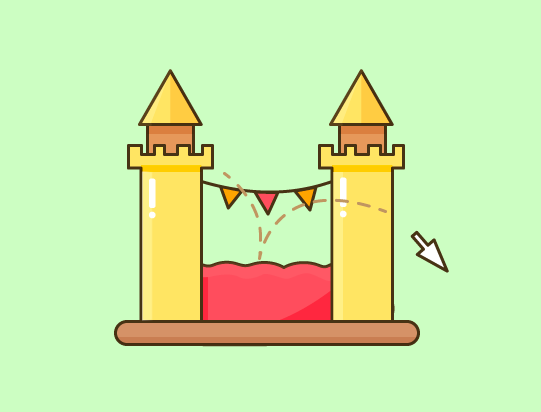Do you know? According to Google Analytics, a good bounce rate should be lower than 60%. If your bounce rate is high, there is a good chance that your site is too hard to navigate, or its homepage is irrelevant to your product and services. As a result, a high proportion of your site visitors leave without any interaction. The ultimate goal of improving your bounce rate is to encourage your visitor to stay longer and explore other pages on your website. If you are still figuring out what is defined as the bounce rate and its examples, you may want to visit our other blog post here.
In order to do that, you have to create a positive user (or visitor) experience while surfing on your site. There’s no single touch button that can fix your bounce rate issues. It requires an elaborate effort that we are sure will be worthwhile. You can start by paying closer attention to these following aspects of your site.
Site speed
This is a rather technical thing that you can quickly improve your bounce rate. Try to improve the site speed of your website. Nowadays, the load time of anything more than 3 seconds is considered long. That is how short people’s attention span has become. People leave slow web pages before it even finishes loading. This can happen if you have a heavy content/image on your website. So try to upload compressed, smaller size images.
Landing page
If people come to your website from an ad or other marketing channel, and people quickly leave before they explore other parts of your website, it can be that your landing page is not relevant to what you advertise in the beginning. Try to put relevant landing pages and high-quality content to keep your visitors’ attention.
Accelerated Mobile Page (AMP)
It is no surprise that most internet access is done through mobile devices. This is why having websites that are optimized for mobile devices are more than important. Especially nowadays people have a shorter attention span and tend to be impatient if your website is not loading less than 3 seconds. If your mobile site takes too long to load, there’s a high chance you lost a good proportion of your target audience.
Easy navigation
Website visitors tend to be impatient and have little tolerance for complicated and unclear navigation. Remember that your visitors are there for a reason, such as to read your content, finding information, or purchase something. By having clear and easy navigation, they can stay on to complete their objectives on visiting your website, without abandoning your website immediately.
Recommend the next step
What does a visitor usually do after finishing reading or scanning your website page? This depends on what you offer next. Sometimes you have to be proactive in suggesting to them several options on what they should read or press next to prevent them from leaving your site early. You can offer a similar topic or similar products that they might enjoy through links.
If you are trying out these steps to improve your site’s bounce rate, results may not happen overnight, but be sure to keep track of your site’s analytics to view if these steps have produced a consistent decreasing trend on your bounce rate. If you have any questions, feel free to reach us out here. Good luck!

